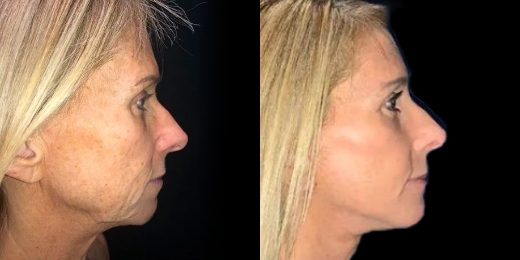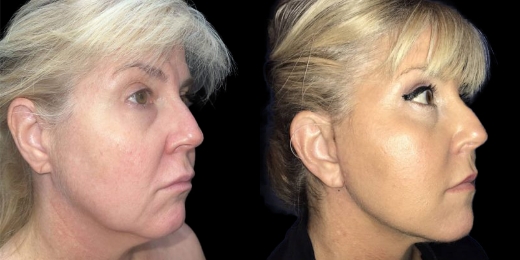Breast implant malposition is when breast implants are not in the correct position, such as sitting too high or too low.
Malposition can happen over time, as happens with capsular contracture, or quickly as a result of trauma. A poor implant choice also can cause malposition as can a technical error. During augmentation surgery, pockets are created to hold implants. If the pockets are improperly created, then the implant may drift out of position.
Dr. Stephen T. Greenberg is a leading plastic surgeon in Manhattan. If you are seeking revision surgery for malpositioned breast implants, Dr. Greenberg is well-known for his expertise in cosmetic plastic surgery and can advise you on corrective steps.
There are four main types of malposition:
Contents
High Malposition
This is the most common malposition, but also the easiest to correct. It can occur if the breast pocket is created too high on the chest, or when an implant “settles” too high in a correctly created pocket. Implants, though high initially, normally settle lower on the chest during healing. But some don’t.
Differences in healing may explain the malposition, but it can also occur when underwire bras are worn during recovery. Underwire bras can compress the lower part of the pocket, preventing the implant from settling into the proper location. Capsular contraction can also cause high malposition, months or years after surgery.
Lateral Malposition
Lateral malpositioned implants are the second most-common malposition, occurring when implants shift to the sides of the body. Lateral movement can be caused by a poorly formed pocket. It also can occur with a correctly formed pocket if the breast tissue is too weak to keep the implant in the proper position. The problem can be aggravated if a patient’s chest wall curves and does not help support the implant.
Sleeping on your stomach during healing can also encourage the sideways movement of implants. If prolonged, the pocket edges near the center of the chest heal shut, preventing implants from positioning correctly. Capsular contraction can also cause lateral malposition.
Low Malposition
An implant that sits too low, referred to as bottoming out, can occur when the breast pocket is formed too low on the chest. It can also occur when an implant pushes its way down, despite a properly placed pocket. This can occur if the breast lacks strong attachments in the breast fold or if those attachments were released too much during surgery. Large implants have a greater risk of bottoming out due to their weight.
Symmastia
This, the rarest malposition, occurs when implants are too close together in the center of the chest, sometimes forming one breast as the skin between the breasts lifts. It can happen with improperly positioned pockets or when overly large pockets are created. However, it can also happen when implants push towards the center in a correctly formed pocket. The shape of the ribs can contribute to the problem as can the choice of breast implant. Bigger implants and high-profile implants, particularly on thin patients, can both be a factor in forming a “unibreast.”
Correcting Malpositions
Correcting implant malposition typically requires revision surgery, ideally by an experienced plastic surgeon, as revision surgery is more complicated.
If you are seeking help with implants that are in the wrong position, Dr. Greenberg is a sought-after expert in the field of cosmetic surgery who can assess your problem and recommend solutions. Please call for a personal consultation.


